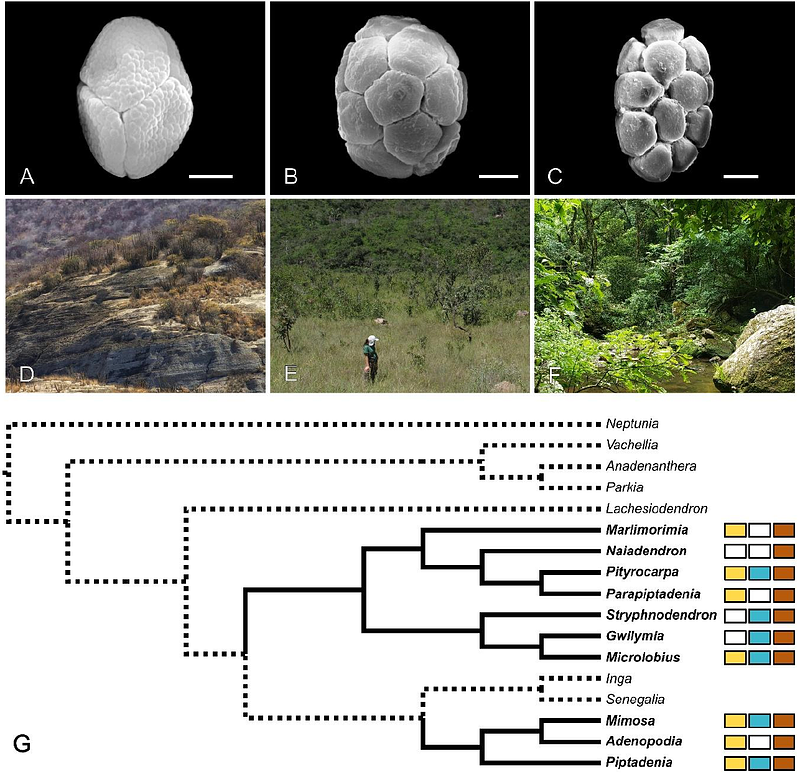Morphological innovation and lineage-specific history drive disparification in the aggregated pollen of mimosoid plants

Morphological innovation and lineage-specific history drive disparification in the aggregated pollen of mimosoid plants
Barduzzi, R. F.; Liau-Kang, S.; Duarte, A. F. T.; dos Santos, F. d. A. R.; Borges, L. M.
AbstractBackground and Aims: The study of morphological diversity (i.e., disparity) offers unique opportunities to understand evolutionary patterns and processes. Plant disparity studies reveal that morphological disparification can be related to factors such as secondary woodiness or to pollination niche, for example. Similarly, some pollen traits are known to be shaped by environmental pressures, but this influence has only been evaluated in monads, never in multi-grained dispersal units. In this study, we investigated the disparity of aggregated dispersal units in two lineages of Neotropical mimosoid legumes. The Mimosa and Stryphnodendron clades are independent lineages that share similarities in pollen morphology and biome shifts. In this context, we asked: What are the patterns of pollen disparity in these lineages, and are these patterns similar between lineages occurring in the same biomes? Methods: To answer these questions, we compiled data from the literature on pollen morphology and biomes of occurrence for a phylogenetically representative set of taxa in the Mimosa and Stryphnodendron clades. With these data, we calculated morphospaces and disparity metrics, and tested whether the pollen morphology of distinct lineages occurring in the same biome differs significantly. Key Results: Our results show that Mimosa and Stryphnodendron clades exhibit distinct patterns of pollen disparity, as do independent lineages occurring in the same biomes. Additionally, we observed that certain biomes support greater or lesser levels of morphological disparity. Conclusions: We conclude that (1) the Mimosa clade has greater disparity, possibly due to evolution of novel pollen morphologies in the genus Mimosa, (2) there is a maintenance of similarities in the pollen of the Stryphnodendron clade, Adenopodia and Piptadenia, and (3) the evolution of pollen grains in these groups appears to be primarily shaped by phylogeny and developmental constraints, with environmental pressures playing a comparatively smaller role.